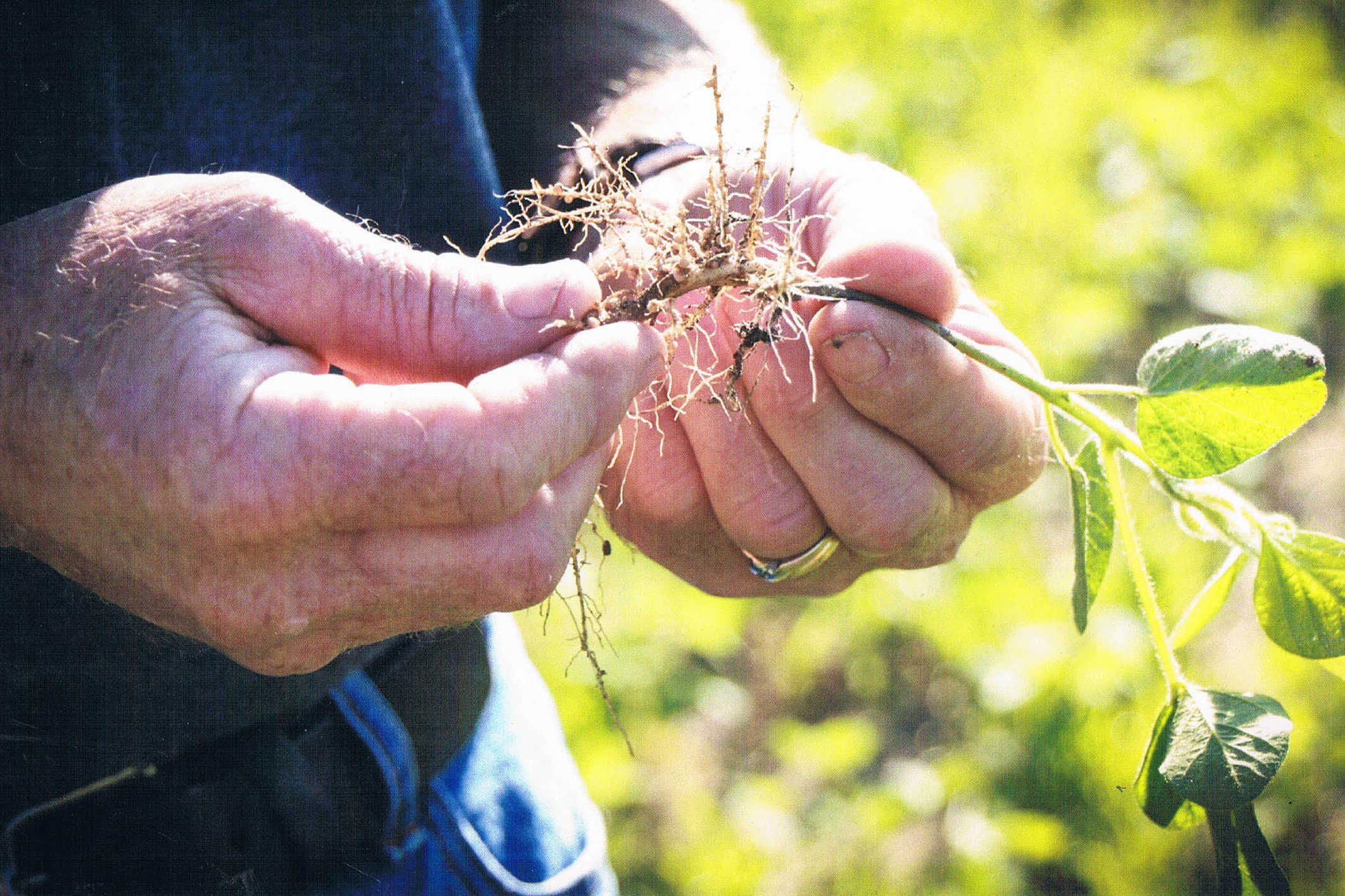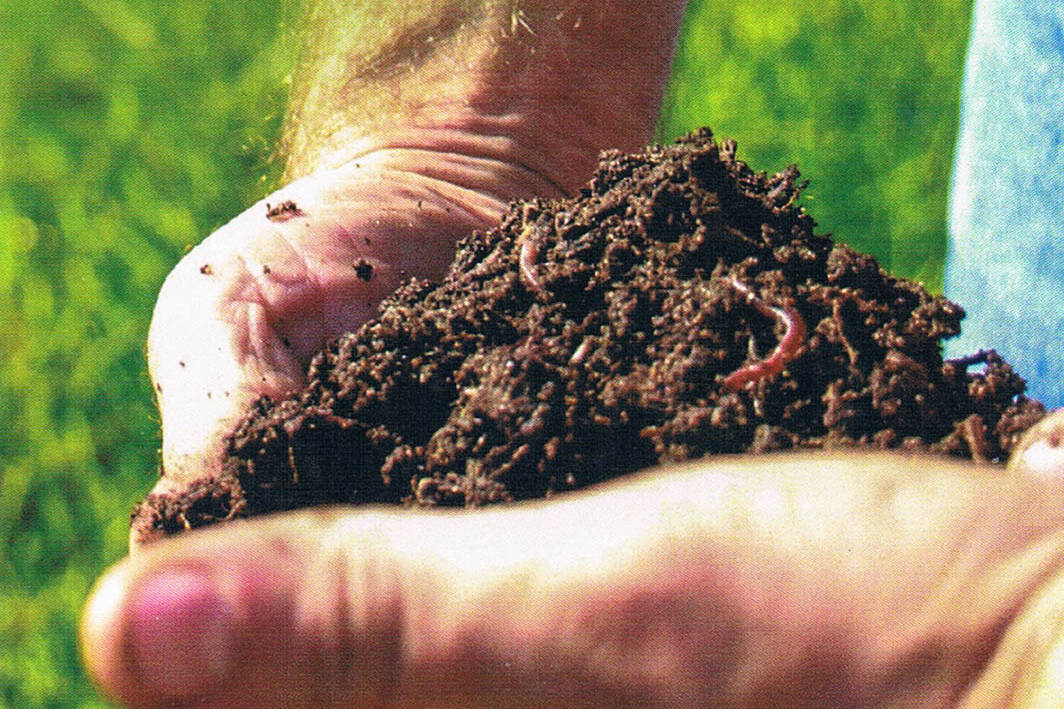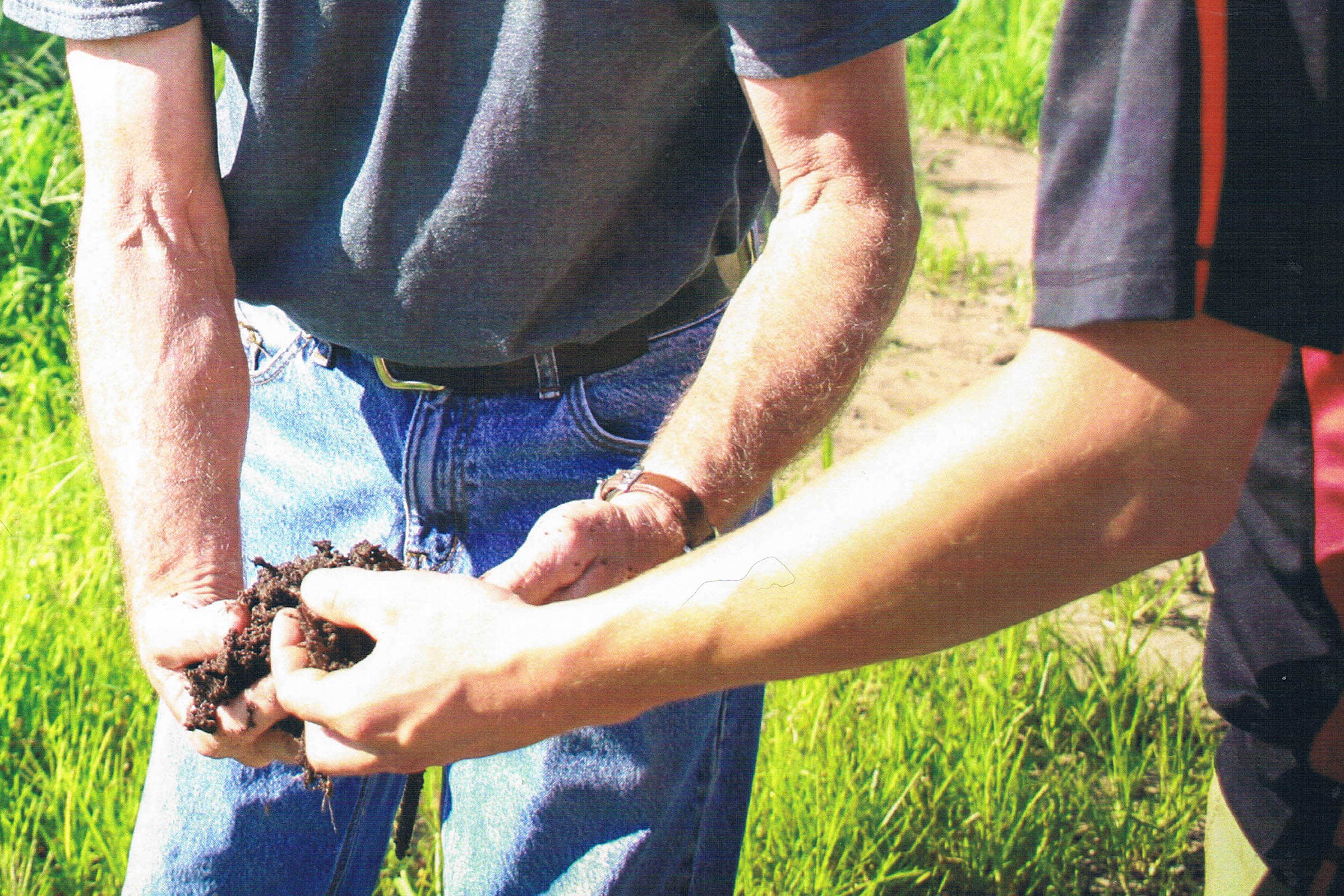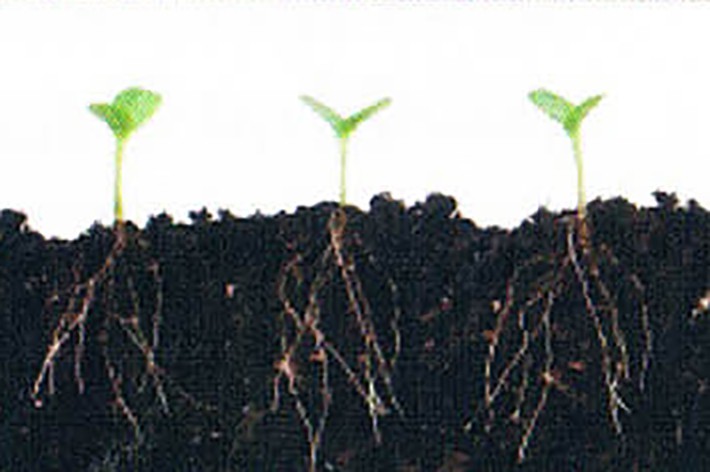Our Secret’s in the Soil
There’s an elephant out there.
It’s early spring. You look out over a farm field and what do you see? Most folks would say, “a lot of dirt.” At Molitor Farms someone once asked farm owner Ted Molitor that same question. He said, “I see an elephant out there.” Really?
Maybe not a real elephant, but Ted knows that just in the first foot of healthy soil, covering only
one acre, there are enough living organisms to weigh the same as a young elephant — about 2,500 pounds. There’s a lot of life under your feet in a healthy farm field. Why is that important?


The secret’s in the soil.
Back in the days of the last ice age, tons of ice and rock glaciers slowly advanced and receded. The effect on the ground underneath gave us what is now the flatlands of our Midwest. However, a 24,000 square mile area bounded by parts of Iowa, Wisconsin, Minnesota, and northwest Illinois, were not touched by retreating glaciers. This geological phenomenon is known as America’s Driftless Area.
Molitor Farms is located within the eastern edge of the Driftless Area and its resulting bounty of rich, loamy soil. If you could look at the soil underground, you’d see a mix of moisture, air, and organic matter working naturally with sunlight that produces healthy plant growth. Managing this biological community is a year-round labor of love by farm families.


Shhhh… don’t disturb the soil.
Managing soil sounds about as interesting as watching grass grow. Actually, how it grows is an exciting part of soil management! Farmers know soil is the basis of farming. Our goal is to protect the soil, enhance its performance, and preserve environmental quality. Molitor Farms is all about using modern technology with a healthy dose of common sense practices.
For example, we don’t till the fields which allows living things such as earthworms, beneficial bacteria, algae, root feeders, and other organic nutrients to not be excessively disturbed in their natural environment. Compaction is also reduced which allows the soil to “breathe.” Fertilizers are used sparingly to encourage nutrient growth. We believe “less is more.”
Pesticides and herbicides are reduced to an absolute minimum and are never used during the active corn growing season. We maximize crop residue from corn during harvest. The chopped pieces of stalk, cob, and leaves are returned to cover the soil, producing 3-4 tons of surface residue per acre. Doing this also has a positive effect on the environment by reducing carbon emission.
Through natural decomposition, this residue provides food and habitat for surface feeders, such as earthworms, and surface dwellers, such as insects and other arthropods. In turn, healthy root growth is encouraged for future crops, which are not genetically modified.
It takes many years and seasons of hard work and good soil management to provide healthy crops and the best, healthy food for your table! That’s our “secret,” and we’re proud of it!
http://geology.teacherfriendlyguide.org/index.php/soils-mw
http://www.extension.umn.edu/agriculture/tillage/soil-management/soil-management-series/introduction-to-soil-management/
Developed by Modern One Marketing
